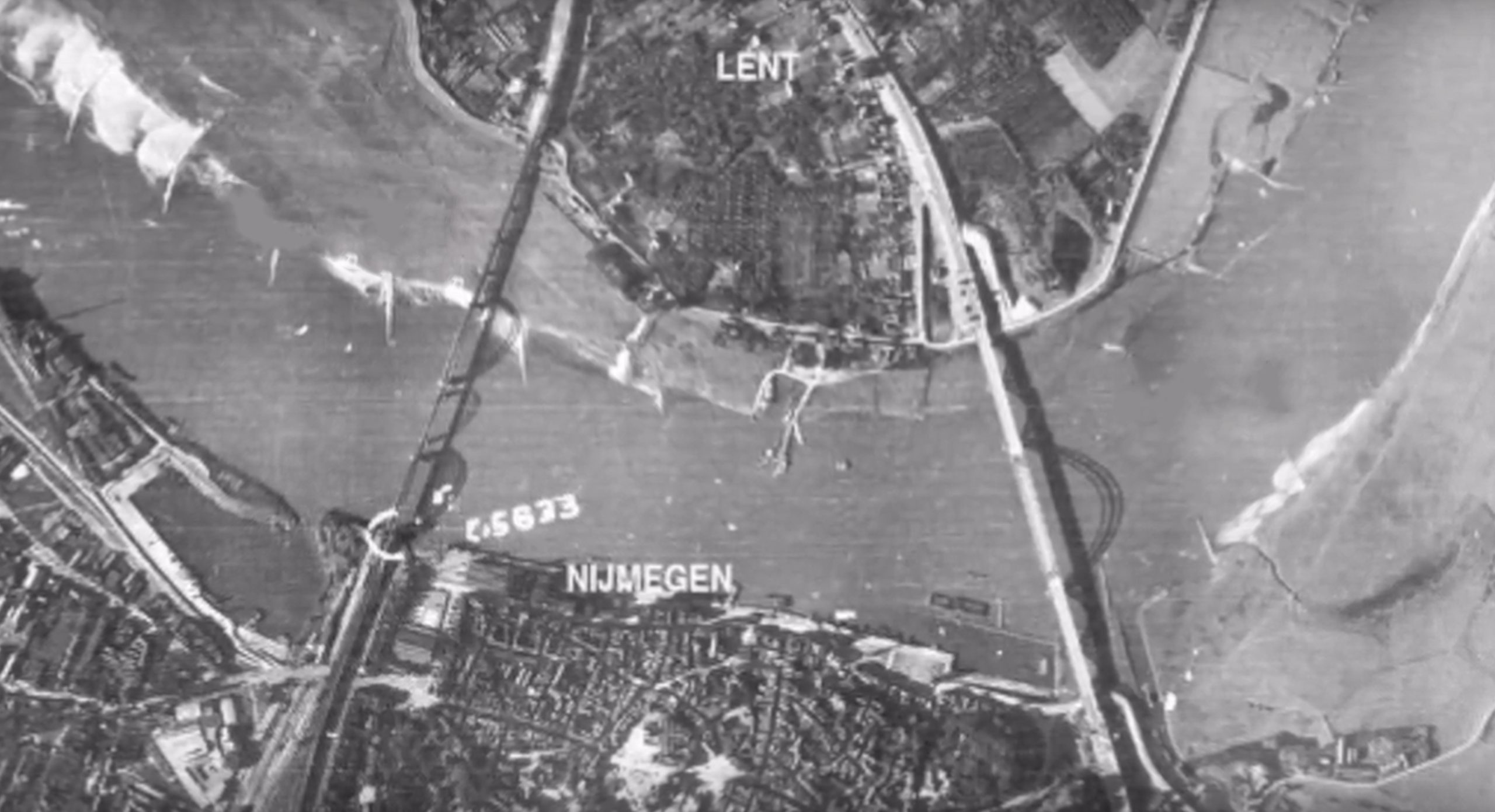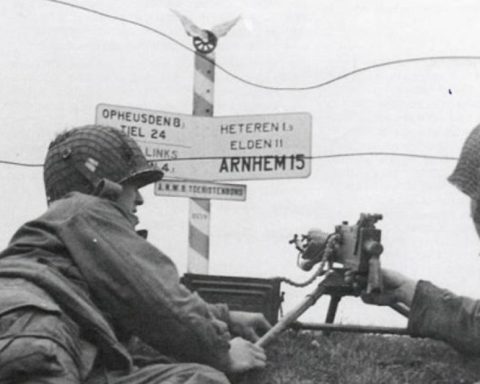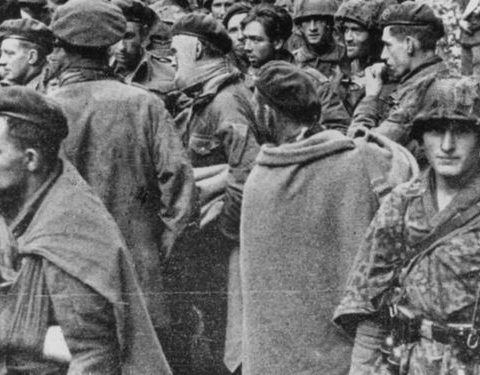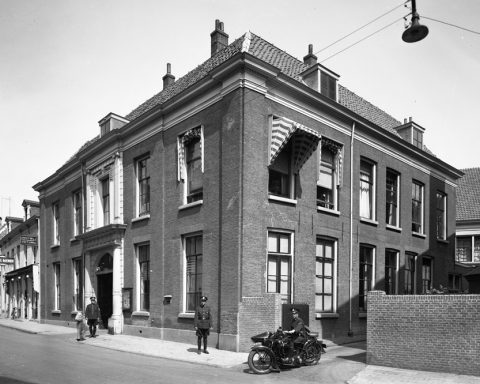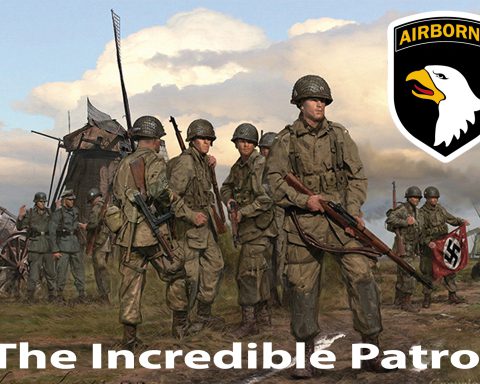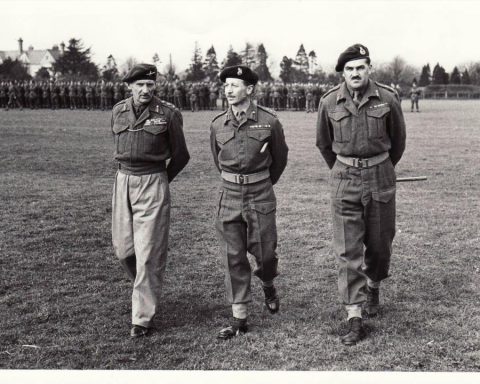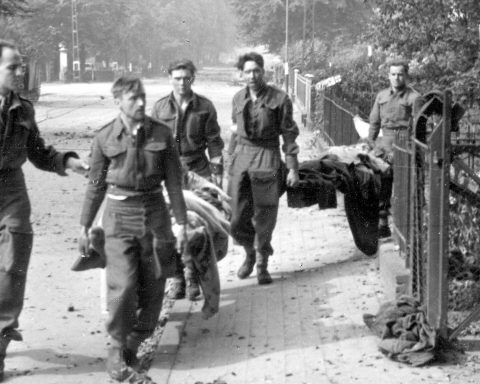Operation Market Garden officially lasted until September 25, 1944. The battle ended with the withdrawal of the remnants of the British airborne division in Oosterbeek. But a few days later the final agreement of Market Garden was for the Germans.
On the night of September 28 to 29, 1944, German divers managed to blow up the railway bridge over the Waal near Nijmegen in a daring attack. The Waal Bridge, which was also attacked, was damaged in the attack.
The attack on the bridges near Nijmegen is an almost forgotten part of the battle. There is almost no attention to the German attack on the Nijmegen bridges in the literature on Operation Market Garden.
However, the successful German attack in the aftermath of Market Garden significantly hindered the Allies in building up troops north of the Waal.
The Crossing
The railway bridge over the Waal and the Waal Bridge in Nijmegen fell into the hands of the Allies in the early evening of Wednesday, September 20, 1944, after a heroic crossing in canvas boats: ‘ The Crossing ‘.
Immediately after the capture of the railway bridge, British engineers had made the bridge suitable for tanks and trucks to drive over. Together with the Waal Bridge, the Allies had two bridges over which troops, guns and tanks were quickly brought north of the Waal to strengthen the front.
The Allies form a bridgehead north of Nijmegen on the Driel-Elst-Bemmel line. By capturing the Waal bridges, the besieged British in Oosterbeek were able to withdraw across the Rhine on September 25.
Air raids
After the Nijmegen bridges fell into Allied hands, the Germans did everything they could to destroy the bridges. By destroying the bridges the Germans would prevent a possible new attack near Arnhem. Moreover, it would then be a piece of cake for the Germans to destroy the American and British troops trapped north of the Waal.
Initially, the Germans deployed their artillery in the Arnhem area to attack the bridges near Nijmegen. Although the German artillery fire was very accurate, the shells caused only little damage.
The Allies had placed all available anti-aircraft guns around the Nijmegen bridges to protect the valuable bridges against German air attacks. In addition, the bridges were continuously protected by RAF aircraft.
The Germans were aware of this. Because the artillery bombardments on the bridges had no effect, it was decided to conduct an air raid on the bridges by the Luftwaffe.
On the night of September 26 to 27, 19 Junkers dive bombers carried out an attack in the dark. However, this only led to some minor damage.
In the early morning of September 27, 1944, the Germans launched another air raid. A total of 42 Focke Wulf FW190 fighter-bombers flew to Nijmegen, protected by Messerschmitts. The German air raid was a complete failure.
Anti-aircraft guns and RAF aircraft managed to down a total of 45 German aircraft. The Nijmegen bridges were still standing proudly after the German air raids.
Divers
But the Germans still had an ace up their sleeve. From Venice, 12 divers from the Kriegsmarine were flown to the Nijmegen area. The divers were instructed to place underwater mines with time ignition near the bridge pillars. The force of the explosion should be enough to blow up both bridges.
The divers were part of a special commando unit of the Kriegsmarine, which was copied from the English. The English had been very successful during the war with sabotage actions carried out by divers and frogmen. The English had managed to destroy several bridges, ships and locks in this way. From 1943 the Germans also had a comparable unit.
Einsatzkommando MEK 65, as the official name of the unit was, had managed to destroy several bridges over rivers and canals in Normandy after D-Day. However, the two bridges over the wide Waal were of a different order.
Mines
The Allies only had a narrow bridgehead around Nijmegen. The area east and west of Nijmegen was still in German hands. The German commando unit would enter the water three kilometers east of Nijmegen and, armed with mines, drift to the bridges.
Once the mines were placed, they would be allowed to drift further west by the current. West of Nijmegen, in an area occupied by the Germans, the divers would then go ashore again.
It was a daring attack where a lot could go wrong. The divers had no experience with the mines they had to place, there was no time to practice, and the Germans did not know how strong the Allied defenses were at the bridges. In addition, the divers had oxygen tanks that allowed them to stay underwater for only thirty minutes at most.
Most divers considered the attack a suicide mission.
On the attack
On September 28 at 8 p.m., the divers entered the water upstream of Nijmegen after being personally addressed by Heinrich Himmler. “The bridges must be destroyed,” he told the divers.
The four divers who attacked the railway bridge had entered the water earlier and reached their goal first. Undiscovered by the Allied guard posts, they managed to unnoticed place the mines around one of the pillars of the railway bridge. With only a little oxygen left in their tanks, they then drifted west.
The eight divers who were to attack the Waal Bridge had now been discovered by Allied soldiers on the bridge. The Allied soldiers fired more or less at random in the dark. The German divers were not hit, but the gunfire prevented them from properly placing the mines near the bridge pier.
Forced by a lack of oxygen, they allowed themselves to be carried west by the current of the river.
The mines near the bridges exploded at the agreed time as intended. The explosion at the Waal Bridge caused a thirty-meter hole in the road surface. Because the mines were not placed properly, the bridge pier was only slightly damaged.
The explosion at the railway bridge went exactly as planned. One of the three spans collapsed into the river with a thunderous noise as a result of the explosion. The railway bridge could no longer be used.

The damage to the Waal Bridge was repaired by Royal Engineers in 48 hours, so that the Allies once again had a usable bank connection across the Waal within two days.
Most of the divers who carried out the attack had been captured by the Allies at that time. Convinced that they were in German-held territory, the divers left the water. They discovered their mistake when a guard spoke to them in English.
The divers ran as fast as they could back to the river, while being fired upon by the Allies. Three divers were killed. Seven divers were captured and only two divers managed to escape captivity.
These two divers, Heinz Brettschneider and Walter Jäger, were awarded the German Cross in gold afterwards.
Although the Germans made several half-hearted attempts to destroy the Waal Bridge in the following months, the bridge remained intact in Allied hands until the end of the war.

